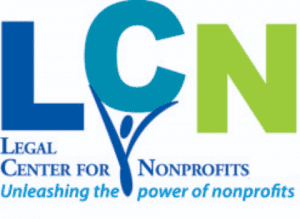Without an effective board of directors, it is virtually impossible for a nonprofit to sustainably and successfully carry out its mission. But what does an effective board look like?
An effective board of directors is:
Well-informed and prepared.
- Directors seek and obtain sufficient information on the issues; consult experts as needed; receive training on governance and on the specific area of the nonprofit’s mission.
- Agendas:
- Are thoughtfully prepared, in collaboration with the executive (if any).
- Include detailed action items, with proposed motions where appropriate.
- Are strategic rather than operational; that is, the action items do not deal with day-to-day operations, but with long- & short-term goals, programmatic outcomes and impact, and policy development; action items are high-level, impacting the entire organization.
- Make use of consent agenda to dispose of routine matters.
- Delivered at least a week in advance of meeting.
- Agenda Packets include:
- Minutes of the prior meeting;
- Financial reports, such as cash flow;
- Committee reports;
- Background information and other materials related to agenda items.
- Directors attend board and committee meetings fully prepared to discuss the agenda items before them; that is, the contents of the agenda packet have been read and digested thoroughly before the meeting.
- Directors understand and embrace their fiduciary duties to the nonprofit.
- Directors embrace their oversight role—know the organization, understand its programs, and analyze its effectiveness.
Actively involved, meeting regularly and as often as needed to guide and oversee the nonprofit, with meetings focused on deliberation and strategic action.
- Regular meetings occur monthly or at least bimonthly. Larger boards may meet quarterly, using committees effectively between board meetings.
- Attendance is well in excess of quorum at each meeting.
- All officers are in attendance at each meeting.
- President/Chair manages the meeting, ensuring everyone speaks & expresses opinions, insights, ideas. The President/Chair should not dominate the discussion (in some organizations, the person presiding is required to remain neutral), but should encourage fair and balanced discussion.
- No one is reading materials for the first time during the meeting; the minutes are not read during the meeting; no regurgitating of committee work. No wallowing in the details!
- Thorough discussion of issues takes place, with all views and perspectives brought forward; additional information sought as needed.
- Directors listen to each other, instead of talking at each other.
- Every meeting includes substantive discussion followed by motions.
- Some type of protocol for the conduct of meetings is helpful and may be developed by the board for its own use. (Robert’s Rules of Order is not required, and because of its complexity, is not recommended for most boards.)
Active in the nonprofit’s behalf outside meetings.
- Directors exploit their networks to advantage the nonprofit, offering access to influencers and opportunities that will help the nonprofit carry out its mission.
- Directors actively & affirmatively represent the nonprofit to the larger community.
- Directors own the process of identifying, recruiting, and orienting new board members, to ensure that the board possesses needed skills, knowledge, and abilities, and appropriately reflects its community.
In partnership with staff and key volunteers; directors:
- Plan for the organization’s future.
- Lead in resourcing the organization—fundraising & other revenue streams.
- Address programmatic impact and outcomes.
- Recognize policy issues and develop policy for the organization, leaving procedural details to staff.
- Use committees and staff effectively, accomplishing essential information-gathering, analysis, and recommendation development in committees.
- Understand the distinction between board work and staff work.
- Supervise the executive director.
How does your nonprofit board of directors measure up?
